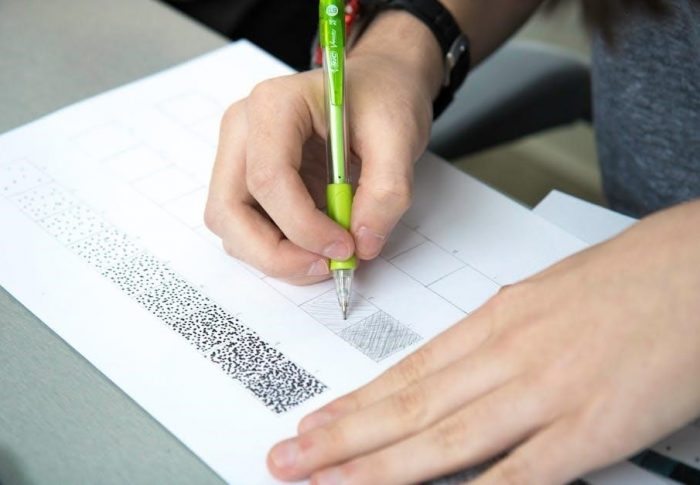
electronics for inventors pdf
Practical Electronics for Inventors⁚ A Comprehensive Guide
This comprehensive guide, “Practical Electronics for Inventors,” is an invaluable resource for aspiring inventors seeking to delve into the world of electronics. It provides a clear and concise introduction to the fundamentals of electronics, guiding readers through the design, construction, and testing of their own functioning gadgets. The book is written by experienced engineers and dedicated hobbyists, ensuring a practical and engaging approach to learning electronics.
Introduction⁚ The Essential Resource for Inventors
The world of electronics can be both fascinating and intimidating, especially for those with a passion for invention. “Practical Electronics for Inventors” serves as a beacon of knowledge for aspiring inventors, demystifying the intricacies of electronics and empowering them to bring their ideas to life. This book acts as a comprehensive guide, encompassing everything from foundational concepts to advanced techniques, providing a solid foundation for understanding and manipulating the power of electronics. Whether you’re a seasoned tinkerer or a curious beginner, this resource will equip you with the necessary skills to confidently navigate the realm of electronics and transform your inventive dreams into tangible realities.
The Authors⁚ Experience and Expertise
The authors of “Practical Electronics for Inventors,” Paul Scherz and Simon Monk, bring a wealth of experience and expertise to the table. Paul Scherz, a Systems Operation Manager with a B.S. in Physics from the University of Wisconsin, blends his scientific background with a passion for electronics, making him a natural fit for this guide. Simon Monk, a dedicated hobbyist and electronics enthusiast, complements Scherz’s technical prowess with a practical approach to learning, ensuring the book’s accessibility for readers of all levels. Together, they provide a unique blend of academic rigor and hands-on practicality, making “Practical Electronics for Inventors” a truly valuable resource for aspiring inventors.
Key Features of the Book
“Practical Electronics for Inventors” stands out for its comprehensive and accessible approach to electronics. The book boasts a wealth of features designed to empower readers with the knowledge and skills needed to bring their inventions to life. It features step-by-step instructions, clear schematics, and illustrative diagrams, making complex concepts easy to understand. The authors’ dedication to practicality is evident in the inclusion of real-world projects, allowing readers to apply their newfound knowledge to tangible creations. The book further enhances its value by incorporating the latest technologies and advancements in the field of electronics, ensuring that readers are equipped with the most current knowledge and techniques.
Content Overview⁚ From Fundamentals to Advanced Concepts
The book’s content is meticulously structured to guide inventors from basic principles to advanced concepts, ensuring a solid foundation for their electronics endeavors. It begins with a thorough exploration of fundamental electronic components, including resistors, capacitors, inductors, and transformers. It delves into the intricacies of circuits and design, providing readers with the tools to create their own electronic circuits. The book also covers essential topics such as microcontrollers, integrated circuits, sensors, actuators, power electronics, and digital electronics, equipping inventors with the knowledge to build sophisticated and innovative devices.
Basic Electronic Components
The book lays a strong foundation by meticulously explaining the characteristics and applications of essential electronic components. It delves into the world of resistors, capacitors, inductors, and transformers, providing clear explanations of their functionality and how they interact within circuits. Readers will gain an understanding of how these components control voltage, current, and energy flow, enabling them to select the appropriate components for their projects. The book also explores diodes, transistors, and integrated circuits, highlighting their crucial roles in modern electronics and their application in various circuits.
Circuits and Design
This section delves into the heart of electronics, guiding inventors through the art of circuit design. It explains the fundamental concepts of circuit theory, including series and parallel circuits, voltage dividers, and current loops. Readers will learn how to analyze circuit behavior, calculate component values, and troubleshoot common circuit issues. The book provides practical examples and step-by-step instructions for building basic circuits, fostering hands-on experience and a deeper understanding of circuit principles. By mastering these concepts, inventors can confidently design and implement their own electronic circuits, bringing their innovative ideas to life.
Microcontrollers and Integrated Circuits
This section delves into the world of microcontrollers and integrated circuits, essential components for modern electronics. Readers will discover how microcontrollers act as the “brains” of electronic systems, allowing them to process information, control outputs, and interact with the outside world. The book explores popular microcontroller platforms, such as Arduino and Raspberry Pi, providing practical guidance on programming and interfacing these devices with sensors, actuators, and other peripherals. Additionally, the section explores the capabilities of integrated circuits (ICs), which are compact and powerful components that perform specific functions, such as amplification, signal processing, and data conversion, empowering inventors to build complex and sophisticated electronic systems.

Sensors and Actuators
This section dives into the fascinating world of sensors and actuators, the key components that enable electronic systems to interact with their environment. Readers will learn how sensors act as the “eyes and ears” of electronic devices, converting physical phenomena like temperature, light, pressure, and motion into electrical signals that can be processed by microcontrollers. The book explores a wide range of sensor types, including temperature sensors, light sensors, pressure sensors, and accelerometers, providing practical guidance on their operation, selection, and integration into projects. Furthermore, the section examines actuators, the “muscles” of electronic systems, which convert electrical signals into physical actions, such as controlling motors, lights, valves, and other mechanisms. This comprehensive coverage empowers inventors to create interactive and responsive electronic systems that can sense and react to their surroundings.
Power Electronics
This section delves into the essential topic of power electronics, which deals with the efficient conversion, control, and distribution of electrical power. Inventors will learn how to design and implement power supplies, voltage regulators, and other circuits that provide the necessary power for their creations. The book explores different power supply architectures, including linear and switching regulators, and provides practical examples of how to choose the appropriate components based on project requirements. Readers will gain a deep understanding of concepts such as AC/DC conversion, DC/DC conversion, power factor correction, and battery management, enabling them to design reliable and efficient power systems for their inventions. The section also covers safety considerations related to power electronics, ensuring that inventors can build their projects responsibly.
Digital Electronics
This crucial chapter introduces the world of digital electronics, the foundation of modern computing and communication systems. Inventors will discover the basics of binary representation, logic gates, Boolean algebra, and digital circuits. The book explores different digital logic families, including TTL and CMOS, and provides practical examples of how to design and build simple digital circuits; Readers will learn about flip-flops, counters, shift registers, and other essential digital building blocks, enabling them to create innovative digital systems for their inventions. The section also covers the use of microcontrollers and integrated circuits (ICs) in digital electronics, providing a stepping stone to more complex digital designs. With a solid understanding of digital electronics, inventors can create sophisticated control systems, data acquisition systems, and communication interfaces for their projects.
Applications and Projects⁚ Bringing Theory to Life
This section transforms theoretical knowledge into practical applications, inspiring inventors to bring their ideas to life. It showcases a wide range of real-world projects that demonstrate the power of electronics. The book features detailed instructions, schematics, and code examples to guide readers through the construction of functional devices. From simple circuits like LED lighting and motor control to more advanced projects involving robotics, wireless communication, and data logging, the book offers a diverse collection of projects to spark creativity. Each project is designed to reinforce key concepts covered earlier in the book, encouraging hands-on learning and practical application of electronics principles. By completing these projects, inventors gain valuable experience and confidence in their ability to design and build their own innovative creations.
Learning Resources and Support
Recognizing that learning electronics is an ongoing journey, the authors provide invaluable learning resources and support to empower inventors. The book includes a comprehensive index, glossary, and extensive bibliography for further exploration. The authors also encourage engagement with online communities and forums dedicated to electronics, recognizing the power of collaborative learning and shared knowledge. These online platforms serve as valuable resources for seeking assistance, sharing projects, and staying updated on the latest advancements in electronics. The book’s emphasis on hands-on learning is further enhanced by the inclusion of online supplementary materials, such as circuit simulations, project files, and code examples. These additional resources provide a virtual laboratory where inventors can experiment, troubleshoot, and refine their electronic designs. By offering a multi-faceted approach to learning and support, the book empowers inventors to confidently navigate the exciting world of electronics.

The Importance of Hands-on Learning
The authors firmly believe that hands-on learning is the cornerstone of mastering electronics. They emphasize that theoretical knowledge alone is insufficient for true understanding and innovation. “Practical Electronics for Inventors” actively encourages readers to build circuits, experiment with components, and engage in hands-on projects. The book’s practical approach is evident in its numerous schematics, circuit diagrams, and step-by-step instructions for building various electronic projects. By engaging in hands-on activities, inventors gain a deeper understanding of how electronic components interact, how circuits function, and how to troubleshoot common problems. The book’s emphasis on hands-on learning is not merely a recommendation but a vital element of its educational philosophy. It recognizes that the process of building, experimenting, and iterating is where true innovation takes place. By empowering inventors with the tools and knowledge to create, the book fosters a spirit of exploration and discovery that is essential for success in the world of electronics.
Empowering Inventors with Electronics Knowledge
“Practical Electronics for Inventors” stands as a testament to the power of knowledge and its ability to unlock the boundless potential of invention. The book provides a comprehensive and accessible foundation in electronics, guiding readers through the intricacies of circuits, components, and design principles. It not only equips inventors with the technical skills needed to bring their ideas to life but also instills a spirit of curiosity, experimentation, and problem-solving that is essential for innovation. By fostering a deep understanding of electronics, the book empowers inventors to push the boundaries of what’s possible, transforming their creative visions into tangible realities. Whether one is a seasoned tinkerer or a novice enthusiast, “Practical Electronics for Inventors” serves as an invaluable resource, inspiring and enabling the next generation of inventors to shape the world through the transformative power of electronics.






